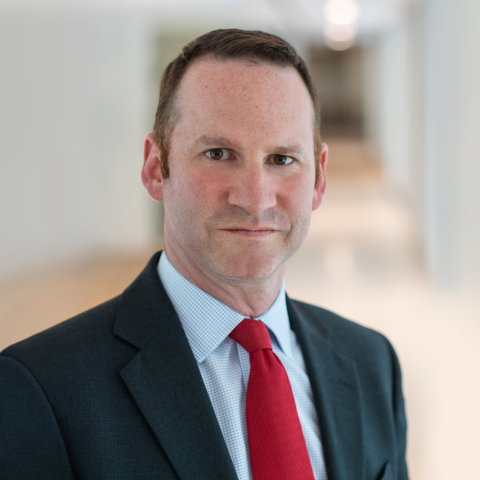Shifting political winds in the Middle East do not come as a surprise — whether as blowback from political storms or turbulent winds of war. Currently, both are gusting ominously across the region.
In recent days, the world’s eyes have been focused on vast political and humanitarian upheaval in Syria. Bashar al-Assad’s 24-year-long regime has been overthrown, and the country has entered an uncertain chapter — and a particularly dangerous one for its religious minorities. Christians, once making up 10% of the population, are diminishing while facing intensified threats from two radical Muslim militant groups — the Turkish-backed Syrian National Army (SNA) and Hay’at Tahrir al-Sham (HTS).
Syria’s sudden shift in leadership has introduced the Islamist world’s rising star: Syrian rebel leader Abu Mohammed al-Jawlani, the leader of HTS. Despite Jawlani’s soft-spoken promises of peace and prosperity, his history is both alarming and ominous.
Brittanica’s biographic research provides insight into some of Jawlani’s past activities, which contribute heavily to his present vision. Here is a brief summary:
“In anticipation of the U.S. invasion of Iraq in 2003, like many other Syrians, Jolani was recruited in Damascus, and traveled to Iraq to fight the U.S. advance. He joined Al-Qaeda in Iraq (AQI), a particularly brutal al-Qaeda affiliate. (Involved in near-daily attacks, suicide bombings, and even the targeting of Iraqi civilians, AQI in 2004 faced reprimand from al-Qaeda leadership for the sheer amount of bloodshed at its hands.)
“Jolani, by then leading a cell, was caught by U.S. forces in 2005 and detained at Camp Bucca, where the most notorious Iraqi militants and terrorists were known to network. Then, in 2011, Islamic State’s (ISIS) leadership sent Jolani to Syria to form a contingent of al-Qaeda that could take part in the conflict. … Fighters from Iraq, Saudi Arabia, and parts of Central Asia also joined its ranks, although the group was predominantly Syrian through most of its history.”
Is the Middle East and the rest of the world fully prepared for the sudden rise to power of
Abu Mohammed al-Jawlani? Having been a former leader in both ISIS and al-Qaeda — who is said to have a $10 million U.S. bounty on his head — he has repeatedly reinvented himself over many years, and now re-emerges as a reformed “man of peace.”
As the saying goes, “The devil you know is better than the devil you don’t know.” This adage definitely rings true with regard to Jawlani, who is far from an unknown player, and particularly to Israelis. His public relations moves and militant history has somehow managed to make al-Assad look like the “better” devil, while SNA and HTS claim to offer a brighter future than whatever Assad might have provided. However, the history of these groups suggests otherwise.
HTS’s Dual Narrative
In recent weeks, HTS (under Jawlani’s leadership) has attempted to rebrand itself as a nationalist force committed to tolerance. Statements about inclusion and even gestures toward Christian communities suggest a shift in ideology. Yet skepticism is justified. How can any group expect observers to suddenly believe it has embraced moderation when, just yesterday, it was firmly rooted in radical Islamist ideology?
HTS’s deep roots in Salafi-jihadism cannot be ignored. In Idlib, reports of property confiscations, restrictions on worship, and harassment by religious police expose the stark reality lurking behind HTS’s current public relations campaign. While Jawlani has publicly distanced his group from al-Qaeda, observers caution that these actions may be more tactical than genuine. The 2023 USCIRF report states that HTS in Idlib “perpetrated many violations against religious minorities” and, despite its efforts to rebrand and distance itself from past atrocities, continues to enforce a Salafi-Shariah law-based ideology that disenfranchises Christians, Druze, and non-Sunni sects including Shiites and Alawites.
The SNA’s Targeting of Christians
The Turkish-backed SNA has also left a particularly brutal legacy in regions like Afrin and Shebha. In Afrin, churches have been desecrated, with Christians and Yezidis violently hunted down door-to-door, and communities terrorized by kidnappings and forced conversions. These atrocities, as clearly documented by USCIRF, reveal a clear agenda: the erasure of Christian identity in areas under their control.
In recent operations this December, SNA took control of Syria’s Shebha area, formerly protected by the Syrian Democratic Forces (SDF), where Christians and religious minorities had to run for their lives, endangered by killings, beheadings, kidnappings, and forced disappearances. Alongside harassment, looting, and systematic intimidation, more than 100,000 people have fled, creating a severe humanitarian crisis. A recent report by the former Chair of USCIRF, Nadine Maenza, exposes the hollow promises of freedom espoused by the SNA, in sharp contrast with the realities described to her by displaced families. This violence mirrors previous abuses in Afrin (2018) and the regions of Sere Kaniye and Tel Abyad (2019).
Meanwhile, if Turkey and its proxy militia, SNA, succeed in claiming more territory from the SDF (Syrian Democratic Forces) in DAANES (Democratic Autonomous Administration of north and east Syria), minorities including Kurds, Christians, Yezidis, and Druze will face renewed threats of violence, persecution, and death. This would be a tragic development, as DAANES currently stands as a beacon of hope for religious and ethnic minorities, and where both minorities and women are equal citizens. Their model of governance is in line with U.N. Resolution 2254: as the basis for “a Syrian led and Syrian-owned political transition.”
A Precarious Future for Syria’s Christians
Across Syria, the risks for Christians are profound. Both the SNA and HTS present immediate threats to their safety and long-term survival. The SNA’s past record of violence and HTS’s questionable rebranding of itself leave little room for optimism. Christians in Syria are navigating a perilous landscape, with their cultural and religious heritage hanging in the balance. The removal of Assad’s regime — brutal as it was — opens an ominous new chapter for Syria, along with other risks for Israel and beyond. Let us watch, pray, and speak out on behalf of Syria’s beleaguered minorities and the future of the Middle East.
Read this article, co-authored by Charmaine Hedding, in The Washington Stand.
Enjoyed this article? Subscribe to Hudson’s newsletters to stay up to date with our latest content.




















